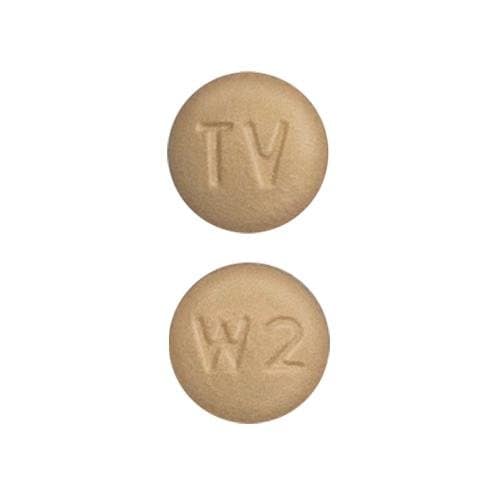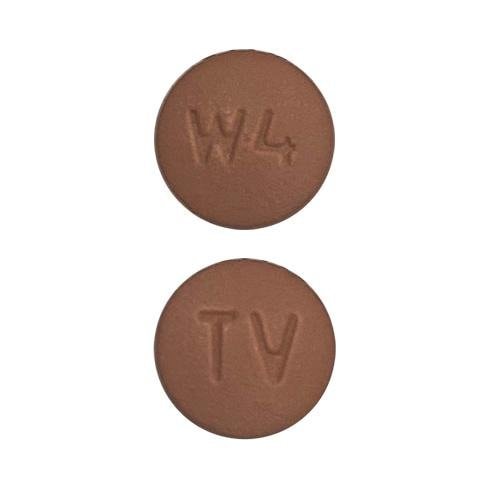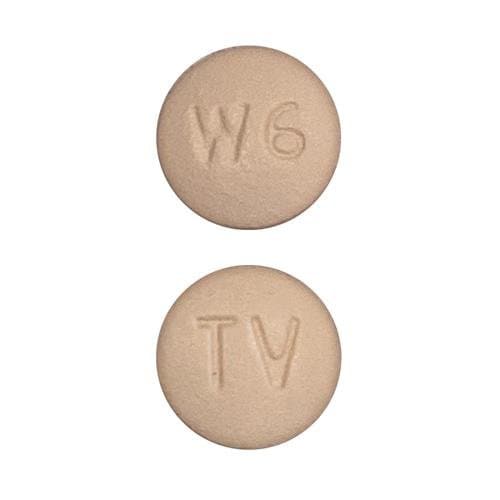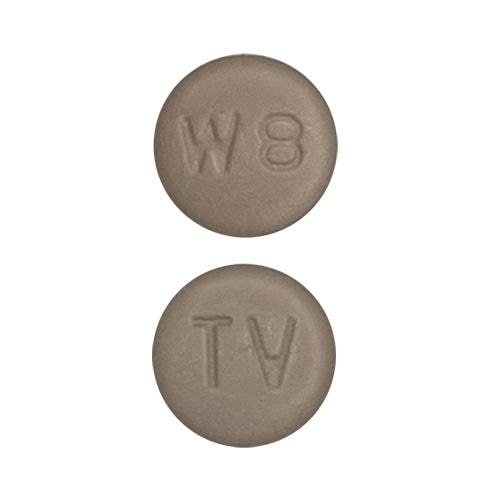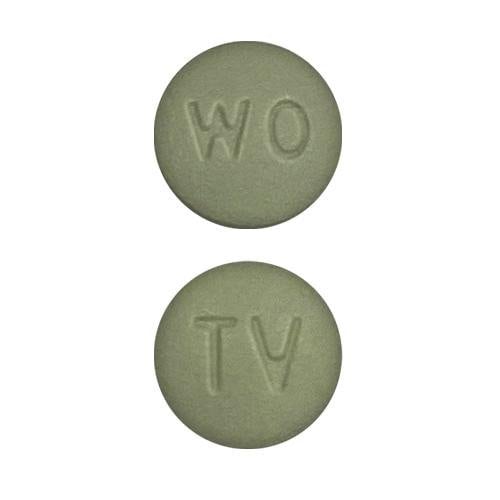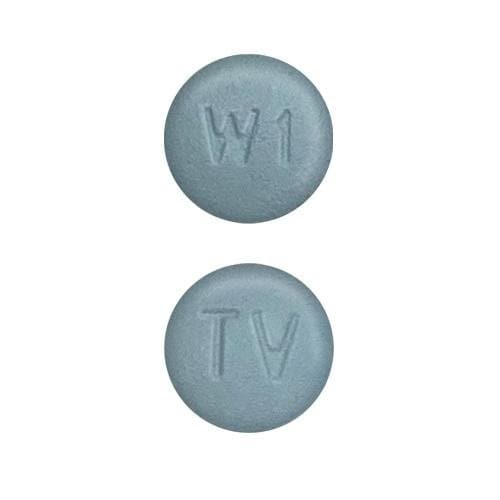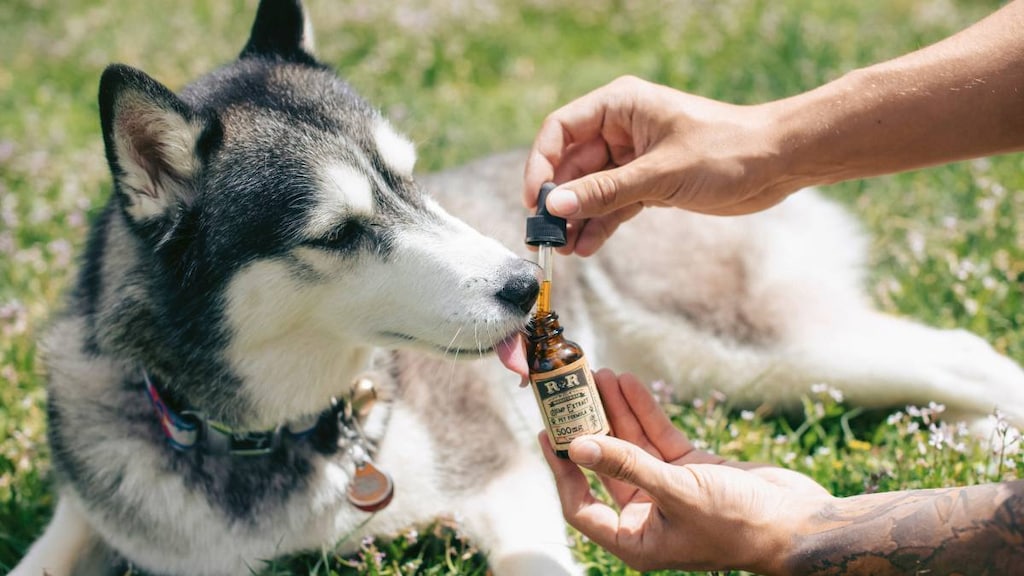Boxed Warning
Serious psychiatric and behavioral reactions:
Serious or life-threatening psychiatric and behavioral adverse reactions including aggression, hostility, irritability, anger, and homicidal ideation and threats have been reported in patients taking perampanel. These reactions occurred in patients with and without prior psychiatric history, prior aggressive behavior, or concomitant use of medications associated with hostility and aggression.
Advise patients and caregivers to contact a health care provider immediately if any of these reactions or changes in mood, behavior, or personality that are not typical for the patient are observed while taking perampanel or after discontinuing perampanel. Closely monitor patients, particularly during the titration period and at higher doses. Reduce perampanel if these symptoms occur, and discontinue the drug immediately if symptoms are severe or are worsening.
Dosage Forms
Excipient information presented when available (limited, particularly for generics); consult specific product labeling.
Suspension, Oral:
Fycompa: 0.5 mg/mL (340 mL) [contains sodium benzoate]
Tablet, Oral:
Fycompa: 2 mg, 4 mg, 6 mg, 8 mg
Fycompa: 10 mg, 12 mg [contains fd&c blue #2 aluminum lake]
Pharmacology
Mechanism of Action
The exact mechanism by which perampanel exerts antiseizure activity is not definitively known; it is a noncompetitive antagonist of the ionotropic alpha-amino-3-hydroxy-5-methyl-4-isoxazolepropionic acid (AMPA) glutamate receptor on postsynaptic neurons. Glutamate is a primary excitatory neurotransmitter in the central nervous center causing many neurological disorders from neuronal over excitation.
Pharmacokinetics/Pharmacodynamics
Absorption
Oral: Rapid and complete; food slows rate of absorption
Metabolism
Extensive via primary oxidation mediated by CYP3A4/5, and to a lesser extent by CYP1A2 and CYP2B6, and sequential glucuronidation
Excretion
Tablet: Feces (48%); urine (22%)
Time to Peak
0.5 to 2.5 hours; delayed ~1 to 3 hours with food
Half-Life Elimination
~105 hours
Protein Binding
~95% to 96%; primarily albumin and alpha1-acid glycoprotein
Use in Specific Populations
Special Populations: Renal Function Impairment
Apparent clearance decreased by 27% in patients with mild renal impairment (CrCl 50 to 80 mL/minute), with a corresponding 37% increase in AUC.
Special Populations: Hepatic Function Impairment
The total (free and protein bound) exposure (AUC0-inf) of perampanel was 50% greater in mild hepatic impairment and more than doubled (2.55-fold) in moderate hepatic impairment. The AUC0-∞ of free perampanel in mild and moderate hepatic impairment was 1.8-fold and 3.3-fold greater, respectively. The half-life was prolonged in mild impairment (306 vs 125 hours) and moderate impairment (295 vs 139 hours).
Use: Labeled Indications
Partial-onset seizures: Treatment of partial-onset seizures with or without secondarily generalized seizures as adjunct or monotherapy in patients with epilepsy who are ≥4 years of age.
Primary generalized tonic-clonic seizures: Treatment of primary generalized tonic-clonic seizures as adjunct therapy in patients with epilepsy who are ≥12 years of age.
Contraindications
There are no contraindications listed in manufacturer's US labeling.
Canadian labeling: Hypersensitivity to perampanel or any component of the formulation.
Dosage and Administration
Dosing: Adult
Note: Reduce the dosage in patients who experience serious psychiatric or behavioral reactions; discontinue immediately if symptoms are severe or worsening. Tablets and oral suspension may be used interchangeably.
Partial-onset seizures: Oral:
Patients not receiving enzyme-inducing AED regimens: Initial: 2 mg once daily at bedtime; may increase daily dose by 2 mg once daily no more frequently than at weekly intervals based on response and tolerability. Recommended maintenance dose: 8 to 12 mg once daily at bedtime; some patients may respond to 4 mg once daily; 12 mg once daily has resulted in somewhat greater reductions in seizure rates in some patients but with substantial increase in side effects.
Patients receiving enzyme-inducing AED regimens (eg, phenytoin, carbamazepine, oxcarbazepine): Initial: 4 mg once daily at bedtime; may increase daily dose by 2 mg once daily no more frequently than at weekly intervals based on response and tolerability. Maintenance dose has not been established; highest dose used in clinical trials was 12 mg once daily.
Primary generalized tonic-clonic seizures (adjunct): Oral:
Patients not receiving enzyme-inducing AED regimens: Initial: 2 mg once daily at bedtime; may increase dose by 2 mg once daily no more frequently than at weekly intervals based on response and tolerability. Recommended maintenance dose: 8 mg once daily at bedtime; if tolerated and further seizure control is needed, may increase up to 12 mg once daily (maximum dose: 12 mg once daily).
Patients receiving enzyme-inducing AED regimens (eg, phenytoin, carbamazepine, oxcarbazepine): Initial 4 mg once daily at bedtime; may increase daily dose by 2 mg once daily no more frequently than at weekly intervals based on response and tolerability. Maintenance dose has not been established; highest dose used in clinical trials was 12 mg once daily.
Dosing: Geriatric
Refer to adult dosing. Increase dose no more frequently than every 2 weeks.
Dosing: Pediatric
Note: Dosing should be individualized based upon response and tolerability. Reduce the dosage in patients who experience serious psychiatric or behavioral reactions; discontinue immediately if symptoms are severe or worsening.
Partial seizures; adjunct or monotherapy: Children ≥4 years and Adolescents: Oral:
Patients not receiving moderate or strong CYP3A4 inducers: Initial: 2 mg once daily at bedtime; may increase daily dose by 2 mg increments no more frequently than at weekly intervals; recommended maintenance dose range: 8 to 12 mg once daily at bedtime; some patients may respond to doses of 4 mg/day. Although 12 mg doses showed somewhat greater efficacy (reduction in seizure rate) in some patients, the 12 mg dose was associated with substantially higher adverse effects; maximum daily dose: 12 mg/day.
Patients receiving moderate or strong CYP3A4 inducers (eg, phenytoin, carbamazepine, oxcarbazepine): Initial: 4 mg once daily at bedtime; may increase daily dose by 2 mg increments no more frequently than at weekly intervals; target maintenance dose range not established; maximum reported dose is 12 mg/day. Monitor patients closely for response and tolerability when inducer is being introduced or withdrawn from therapeutic regimen; perampanel dosing adjustment may be necessary.
Primary generalized tonic-clonic seizures (adjunct): Children ≥12 years and Adolescents: Oral:
Patients not receiving moderate or strong CYP3A4 inducers: Initial: 2 mg once daily at bedtime; may increase dose by 2 mg once daily no more frequently than at weekly intervals based on response and tolerability. Recommended maintenance dose: 8 mg once daily at bedtime; some patients may require 12 mg once daily at bedtime for further seizure control and if tolerated; maximum daily dose: 12 mg/day
Patients receiving moderate or strong CYP3A4 inducers (eg, phenytoin, carbamazepine, oxcarbazepine): Initial: 4 mg once daily at bedtime; may increase daily dose by 2 mg once daily no more frequently than at weekly intervals; individualize dose based on response and tolerability; in trials, the maximum reported dose was 12 mg/day. Monitor patients closely for response and tolerability when inducer is being introduced or withdrawn from therapeutic regimen; perampanel dosing adjustment may be necessary.
Administration
Tablets: Administer at bedtime without regard to food.
Oral suspension: Shake well before every administration. Use a calibrated measuring device to measure dose (a household teaspoon or tablespoon is not an adequate measuring device). Insert the provided adapter firmly into the neck of the bottle prior to use; adapter should remain in place for the duration of use. Insert the dosing syringe into the adapter and withdraw the dose from the inverted bottle. The cap should be replaced after each use; the cap fits properly when the adapter is in place.
Storage
Tablets: Store at 20°C to 25°C (68°F to 77°F); excursions permitted between 15°C to 30°C (59°F to 86°F).
Oral suspension: Do not store above 30°C (86°F). Do not freeze. Use within 90 days after first opening the bottle.
Perampanel Images
Drug Interactions
Alcohol (Ethyl): Perampanel may enhance the CNS depressant effect of Alcohol (Ethyl). Alcohol may also worsen the negative behavioral and psychiatric effects of Perampanel. Avoid combination
Alizapride: May enhance the CNS depressant effect of CNS Depressants. Monitor therapy
Azelastine (Nasal): CNS Depressants may enhance the CNS depressant effect of Azelastine (Nasal). Avoid combination
Blonanserin: CNS Depressants may enhance the CNS depressant effect of Blonanserin. Consider therapy modification
Brimonidine (Topical): May enhance the CNS depressant effect of CNS Depressants. Monitor therapy
Bromopride: May enhance the CNS depressant effect of CNS Depressants. Monitor therapy
Bromperidol: May enhance the CNS depressant effect of CNS Depressants. Avoid combination
Buprenorphine: CNS Depressants may enhance the CNS depressant effect of Buprenorphine. Management: Consider reduced doses of other CNS depressants, and avoiding such drugs in patients at high risk of buprenorphine overuse/self-injection. Initiate buprenorphine at lower doses in patients already receiving CNS depressants. Consider therapy modification
Cannabidiol: May enhance the CNS depressant effect of CNS Depressants. Monitor therapy
Cannabis: May enhance the CNS depressant effect of CNS Depressants. Monitor therapy
CarBAMazepine: May decrease the serum concentration of Perampanel. Management: Increase the perampanel starting dose to 4 mg/day when perampanel is used with carbamazepine. Patients receiving this combination should be followed closely for response, especially with any changes to carbamazepine therapy. Consider therapy modification
Chlormethiazole: May enhance the CNS depressant effect of CNS Depressants. Management: Monitor closely for evidence of excessive CNS depression. The chlormethiazole labeling states that an appropriately reduced dose should be used if such a combination must be used. Consider therapy modification
Chlorphenesin Carbamate: May enhance the adverse/toxic effect of CNS Depressants. Monitor therapy
CNS Depressants: Perampanel may enhance the CNS depressant effect of CNS Depressants. Management: Patients taking perampanel with any other drug that has CNS depressant activities should avoid complex and high-risk activities, particularly those such as driving that require alertness and coordination, until they have experience using the combination. Consider therapy modification
CYP3A4 Inducers (Moderate): May decrease the serum concentration of Perampanel. Management: Increase the perampanel starting dose to 4 mg/day when perampanel is used concurrently with moderate and strong CYP3A4 inducers. Consider therapy modification
CYP3A4 Inducers (Strong): May decrease the serum concentration of Perampanel. Management: Increase the perampanel starting dose to 4 mg/day when perampanel is used concurrently with moderate and strong CYP3A4 inducers. Consider therapy modification
Dabrafenib: May decrease the serum concentration of CYP3A4 Substrates (High risk with Inducers). Management: Seek alternatives to the CYP3A4 substrate when possible. If concomitant therapy cannot be avoided, monitor clinical effects of the substrate closely (particularly therapeutic effects). Consider therapy modification
Deferasirox: May decrease the serum concentration of CYP3A4 Substrates (High risk with Inducers). Monitor therapy
Dimethindene (Topical): May enhance the CNS depressant effect of CNS Depressants. Monitor therapy
Dronabinol: May enhance the CNS depressant effect of CNS Depressants. Monitor therapy
Droperidol: May enhance the CNS depressant effect of CNS Depressants. Management: Consider dose reductions of droperidol or of other CNS agents (eg, opioids, barbiturates) with concomitant use. Exceptions to this monograph are discussed in further detail in separate drug interaction monographs. Consider therapy modification
Enzalutamide: May decrease the serum concentration of CYP3A4 Substrates (High risk with Inducers). Management: Concurrent use of enzalutamide with CYP3A4 substrates that have a narrow therapeutic index should be avoided. Use of enzalutamide and any other CYP3A4 substrate should be performed with caution and close monitoring. Consider therapy modification
Erdafitinib: May decrease the serum concentration of CYP3A4 Substrates (High risk with Inducers). Monitor therapy
Flunitrazepam: CNS Depressants may enhance the CNS depressant effect of Flunitrazepam. Consider therapy modification
Fosphenytoin: May decrease the serum concentration of Perampanel. Management: Increase the perampanel starting dose to 4 mg/day when perampanel is used with phenytoin/fosphenytoin. Patients receiving this combination should be followed closely for response, especially with any changes to phenytoin/fosphenytoin therapy. Consider therapy modification
HYDROcodone: CNS Depressants may enhance the CNS depressant effect of HYDROcodone. Management: Avoid concomitant use of hydrocodone and benzodiazepines or other CNS depressants when possible. These agents should only be combined if alternative treatment options are inadequate. If combined, limit the dosages and duration of each drug. Consider therapy modification
Ivosidenib: May decrease the serum concentration of CYP3A4 Substrates (High risk with Inducers). Monitor therapy
Kava Kava: May enhance the adverse/toxic effect of CNS Depressants. Monitor therapy
Lemborexant: May enhance the CNS depressant effect of CNS Depressants. Management: Dosage adjustments of lemborexant and of concomitant CNS depressants may be necessary when administered together because of potentially additive CNS depressant effects. Close monitoring for CNS depressant effects is necessary. Consider therapy modification
Lofexidine: May enhance the CNS depressant effect of CNS Depressants. Management: Drugs listed as exceptions to this monograph are discussed in further detail in separate drug interaction monographs. Monitor therapy
Lorlatinib: May decrease the serum concentration of CYP3A4 Substrates (High risk with Inducers). Management: Avoid concurrent use of lorlatinib with any CYP3A4 substrates for which a minimal decrease in serum concentrations of the CYP3A4 substrate could lead to therapeutic failure and serious clinical consequences. Consider therapy modification
Magnesium Sulfate: May enhance the CNS depressant effect of CNS Depressants. Monitor therapy
Mefloquine: May diminish the therapeutic effect of Anticonvulsants. Mefloquine may decrease the serum concentration of Anticonvulsants. Management: Mefloquine is contraindicated for malaria prophylaxis in persons with a history of convulsions. Monitor anticonvulsant concentrations and treatment response closely with concurrent use. Consider therapy modification
Methotrimeprazine: CNS Depressants may enhance the CNS depressant effect of Methotrimeprazine. Methotrimeprazine may enhance the CNS depressant effect of CNS Depressants. Management: Reduce adult dose of CNS depressant agents by 50% with initiation of concomitant methotrimeprazine therapy. Further CNS depressant dosage adjustments should be initiated only after clinically effective methotrimeprazine dose is established. Consider therapy modification
MetyroSINE: CNS Depressants may enhance the sedative effect of MetyroSINE. Monitor therapy
Minocycline (Systemic): May enhance the CNS depressant effect of CNS Depressants. Monitor therapy
Mitotane: May decrease the serum concentration of CYP3A4 Substrates (High risk with Inducers). Management: Doses of CYP3A4 substrates may need to be adjusted substantially when used in patients being treated with mitotane. Consider therapy modification
Nabilone: May enhance the CNS depressant effect of CNS Depressants. Monitor therapy
Orlistat: May decrease the serum concentration of Anticonvulsants. Monitor therapy
Orphenadrine: CNS Depressants may enhance the CNS depressant effect of Orphenadrine. Avoid combination
OXcarbazepine: Perampanel may increase the serum concentration of OXcarbazepine. OXcarbazepine may decrease the serum concentration of Perampanel. Management: Increase the perampanel starting dose to 4 mg/day when perampanel is used with oxcarbazepine. Patients receiving this combination should be followed closely for response, especially with any changes to oxcarbazepine therapy. Consider therapy modification
Oxomemazine: May enhance the CNS depressant effect of CNS Depressants. Avoid combination
OxyCODONE: CNS Depressants may enhance the CNS depressant effect of OxyCODONE. Management: Avoid concomitant use of oxycodone and benzodiazepines or other CNS depressants when possible. These agents should only be combined if alternative treatment options are inadequate. If combined, limit the dosages and duration of each drug. Consider therapy modification
Paraldehyde: CNS Depressants may enhance the CNS depressant effect of Paraldehyde. Avoid combination
Phenytoin: May decrease the serum concentration of Perampanel. Management: Increase the perampanel starting dose to 4 mg/day when perampanel is used with phenytoin/fosphenytoin. Patients receiving this combination should be followed closely for response, especially with any changes to phenytoin/fosphenytoin therapy. Consider therapy modification
Piribedil: CNS Depressants may enhance the CNS depressant effect of Piribedil. Monitor therapy
Pramipexole: CNS Depressants may enhance the sedative effect of Pramipexole. Monitor therapy
Progestins (Contraceptive): Perampanel may decrease the serum concentration of Progestins (Contraceptive). Management: Patients should use an alternative, nonhormonal-based form of contraception both during the concurrent use of perampanel and for 1 month after discontinuing perampanel. Consider therapy modification
ROPINIRole: CNS Depressants may enhance the sedative effect of ROPINIRole. Monitor therapy
Rotigotine: CNS Depressants may enhance the sedative effect of Rotigotine. Monitor therapy
Rufinamide: May enhance the adverse/toxic effect of CNS Depressants. Specifically, sleepiness and dizziness may be enhanced. Monitor therapy
Sarilumab: May decrease the serum concentration of CYP3A4 Substrates (High risk with Inducers). Monitor therapy
Selective Serotonin Reuptake Inhibitors: CNS Depressants may enhance the adverse/toxic effect of Selective Serotonin Reuptake Inhibitors. Specifically, the risk of psychomotor impairment may be enhanced. Monitor therapy
Siltuximab: May decrease the serum concentration of CYP3A4 Substrates (High risk with Inducers). Monitor therapy
Sodium Oxybate: May enhance the CNS depressant effect of CNS Depressants. Management: Consider alternatives to combined use. When combined use is needed, consider minimizing doses of one or more drugs. Use of sodium oxybate with alcohol or sedative hypnotics is contraindicated. Consider therapy modification
Suvorexant: CNS Depressants may enhance the CNS depressant effect of Suvorexant. Management: Dose reduction of suvorexant and/or any other CNS depressant may be necessary. Use of suvorexant with alcohol is not recommended, and the use of suvorexant with any other drug to treat insomnia is not recommended. Consider therapy modification
Tapentadol: May enhance the CNS depressant effect of CNS Depressants. Management: Avoid concomitant use of tapentadol and benzodiazepines or other CNS depressants when possible. These agents should only be combined if alternative treatment options are inadequate. If combined, limit the dosages and duration of each drug. Consider therapy modification
Tetrahydrocannabinol: May enhance the CNS depressant effect of CNS Depressants. Monitor therapy
Tetrahydrocannabinol and Cannabidiol: May enhance the CNS depressant effect of CNS Depressants. Monitor therapy
Thalidomide: CNS Depressants may enhance the CNS depressant effect of Thalidomide. Avoid combination
Tocilizumab: May decrease the serum concentration of CYP3A4 Substrates (High risk with Inducers). Monitor therapy
Zolpidem: CNS Depressants may enhance the CNS depressant effect of Zolpidem. Management: Reduce the Intermezzo brand sublingual zolpidem adult dose to 1.75 mg for men who are also receiving other CNS depressants. No such dose change is recommended for women. Avoid use with other CNS depressants at bedtime; avoid use with alcohol. Consider therapy modification
Adverse Reactions
Many adverse effects are dose-related. Frequency not always defined.
Cardiovascular: Peripheral edema (2%)
Central nervous system: Dizziness (16% to ≤47%), vertigo (3% to ≤47%), hostility (≤12% to ≤20%), aggressive behavior (2% to ≤20%), drowsiness (9% to 18%), abnormal gait (4% to 16%), fatigue (8% to 15%), headache (12% to 13%), irritability (2% to 12%), falling (5% to 10%), ataxia (≤8%), equilibrium disturbance (3% to 5%), anxiety (2% to 5%), dysarthria (1% to 4%), hypoesthesia (3%), hypersomnia (1% to 3%), anger (1% to 3%), memory impaired (2%), paresthesia (2%), confusion (1% to 2%), euphoria (≤2%), mood changes (1% to 2%), agitation, altered mental status, delusion, disorientation, emotional lability, homicidal ideation, paranoia, psychiatric disturbance (worsening)
Dermatologic: Skin rash (4%)
Endocrine & metabolic: Weight gain (4% to 9%), hyponatremia (2%)
Gastrointestinal: Vomiting (4% to 9%), nausea (6% to 8%), abdominal pain (5%), constipation (3%)
Genitourinary: Urinary tract infection (4%)
Hematologic & oncologic: Bruise (2% to 6%)
Neuromuscular & skeletal: Back pain (5%), sprain (4%), myalgia (3%), arthralgia (2% to 3%), limb pain (2% to 3%), musculoskeletal pain (2%), weakness (2%)
Ophthalmic: Blurred vision (3% to 4%), diplopia (3%)
Respiratory: Cough (4%), upper respiratory tract infection (4%), oropharyngeal pain (2%)
Miscellaneous: Head trauma (3%), laceration (2%), limb injury (1% to 2%)
<1%, postmarketing, and/or case reports: Acute psychosis, delirium, DRESS syndrome, hallucination, increased serum triglycerides, suicidal ideation
Warnings/Precautions
Concerns related to adverse effects:
- CNS effects: Dizziness, fatigue (including lethargy and weakness), gait disturbances (including abnormal coordination, ataxia, and balance disorder), and somnolence may occur during therapy; patients should be cautioned about performing tasks that require alertness (eg, operating machinery, driving).
- Multiorgan hypersensitivity reactions: Potentially serious, sometimes fatal, drug reaction with eosinophilia and systemic symptoms (DRESS), also known as multiorgan hypersensitivity, has been reported in patients taking antiepileptic drugs, including perampanel. Symptoms may include fever, rash, lymphadenopathy, eosinophilia, and/or facial swelling, in association with other organ system involvement (eg, hepatitis, nephritis, hematological abnormalities, myocarditis, myositis). Monitor for signs and symptoms of possible disparate manifestations associated with lymphatic, hepatic, renal, and/or hematologic organ systems. Early symptoms of hypersensitivity reactions (eg, fever, lymphadenopathy) may occur without rash; discontinuation and conversion to alternate therapy may be required.
- Neuropsychiatric disorders: [US Boxed Warning]: Dose-related serious or life-threatening neuropsychiatric events (including aggression, anger, homicidal ideation and threats, hostility, and irritability) have been reported most often occurring in first 6 weeks of therapy in patients with or without prior psychiatric history, prior aggressive behavior, or concomitant use of medications associated with hostility and aggression; monitor patients closely especially during dosage adjustments and when receiving higher doses. Adjust dose or immediately discontinue use if severe or worsening symptoms occur; permanently discontinue for persistent severe or worsening psychiatric symptoms or behaviors. Inform patients and caregivers to contact their healthcare provider immediately if they experience any atypical behavioral and/or mood changes while taking perampanel or after discontinuing perampanel. Concurrent use with alcohol has been associated with significantly worsened mood and increased anger; patients should avoid the use of alcohol during therapy.
- Suicidal ideation: Pooled analysis of trials involving various antiepileptics (regardless of indication) showed an increased risk of suicidal thoughts/behavior (incidence rate: 0.43% treated patients compared to 0.24% of patients receiving placebo); risk observed as early as 1 week after initiation and continued through duration of trials (most trials ≤24 weeks). Monitor all patients for notable changes in behavior that might indicate suicidal thoughts or depression; notify health care provider immediately if symptoms occur.
Disease-related concerns:
- Hepatic impairment: Not recommended for use in patients with severe impairment; dosage adjustment recommended for mild to moderate hepatic impairment.
- Renal impairment: Not recommended for use in patients with severe impairment or on hemodialysis; use caution in patients with moderate impairment and consider slower titration.
Concurrent drug therapy issues:
- Drug-drug interactions: Potentially significant interactions may exist, requiring dose or frequency adjustment, additional monitoring, and/or selection of alternative therapy. Consult drug interactions database for more detailed information.
Special populations:
- Elderly: Use caution in elderly patients due to increased risk of dizziness, gait or coordination disturbances, somnolence, fatigue-related events, and falls; proceed slowly with dosing titration in patients ≥65 years of age.
- Fall risk: Use with extreme caution in patients who are at risk of falls; use has been associated with falls and traumatic injury (including head injuries and bone fracture).
Dosage forms specific issues:
- Lactose: Formulation may contain lactose.
Other warnings/precautions:
- Withdrawal: Anticonvulsants should not be discontinued abruptly because of the possibility of increasing seizure frequency; therapy should be withdrawn gradually (≥1 week) to minimize the potential of increased seizure frequency, unless safety concerns require a more rapid withdrawal.
Monitoring Parameters
Seizure frequency/duration; suicidality (eg, suicidal thoughts, depression, behavioral changes) during therapy and for at least 1 month after discontinuation; weight
Pregnancy
Pregnancy Considerations
Adverse events have been observed in animal reproduction studies at doses equivalent to the human dose (based on BSA). Contraceptives containing levonorgestrel may be less effective; additional nonhormonal forms of contraception are recommended during perampanel therapy and for 1 month after discontinuation of therapy.
Patients exposed to perampanel during pregnancy are encouraged to enroll in the North American Antiepileptic Drug (NAAED) Pregnancy Registry by calling 1-888-233-2334. Additional information is available at www.aedpregnancyregistry.org.
Patient Education
What is this drug used for?
- It is used to help control certain kinds of seizures.
Frequently reported side effects of this drug
- Headache
- Nausea
- Vomiting
- Abdominal pain
- Bruising
- Fatigue
- Loss of strength and energy
- Back pain
- Weight gain
Other side effects of this drug: Talk with your doctor right away if you have any of these signs of:
- Depression like thoughts of suicide, anxiety, emotional instability, confusion
- Liver problems like dark urine, fatigue, lack of appetite, nausea, abdominal pain, light-colored stools, vomiting, or yellow skin.
- Thoughts of homicide
- Shortness of breath
- Excessive weight gain
- Swelling of arms or legs
- Chest pain
- Unable to pass urine
- Change in amount of urine passed
- Irritability
- Agitation
- Mood changes
- Panic attacks
- Fury
- Anger
- Confusion
- Swollen glands
- Sensing things that seem real but are not
- Trouble with memory
- Change in balance
- Severe dizziness
- Passing out
- Abnormal gait
- Signs of a significant reaction like wheezing; chest tightness; fever; itching; bad cough; blue skin color; seizures; or swelling of face, lips, tongue, or throat.
Note: This is not a comprehensive list of all side effects. Talk to your doctor if you have questions.
Consumer Information Use and Disclaimer: This information should not be used to decide whether or not to take this medicine or any other medicine. Only the healthcare provider has the knowledge and training to decide which medicines are right for a specific patient. This information does not endorse any medicine as safe, effective, or approved for treating any patient or health condition. This is only a brief summary of general information about this medicine. It does NOT include all information about the possible uses, directions, warnings, precautions, interactions, adverse effects, or risks that may apply to this medicine. This information is not specific medical advice and does not replace information you receive from the healthcare provider. You must talk with the healthcare provider for complete information about the risks and benefits of using this medicine.
